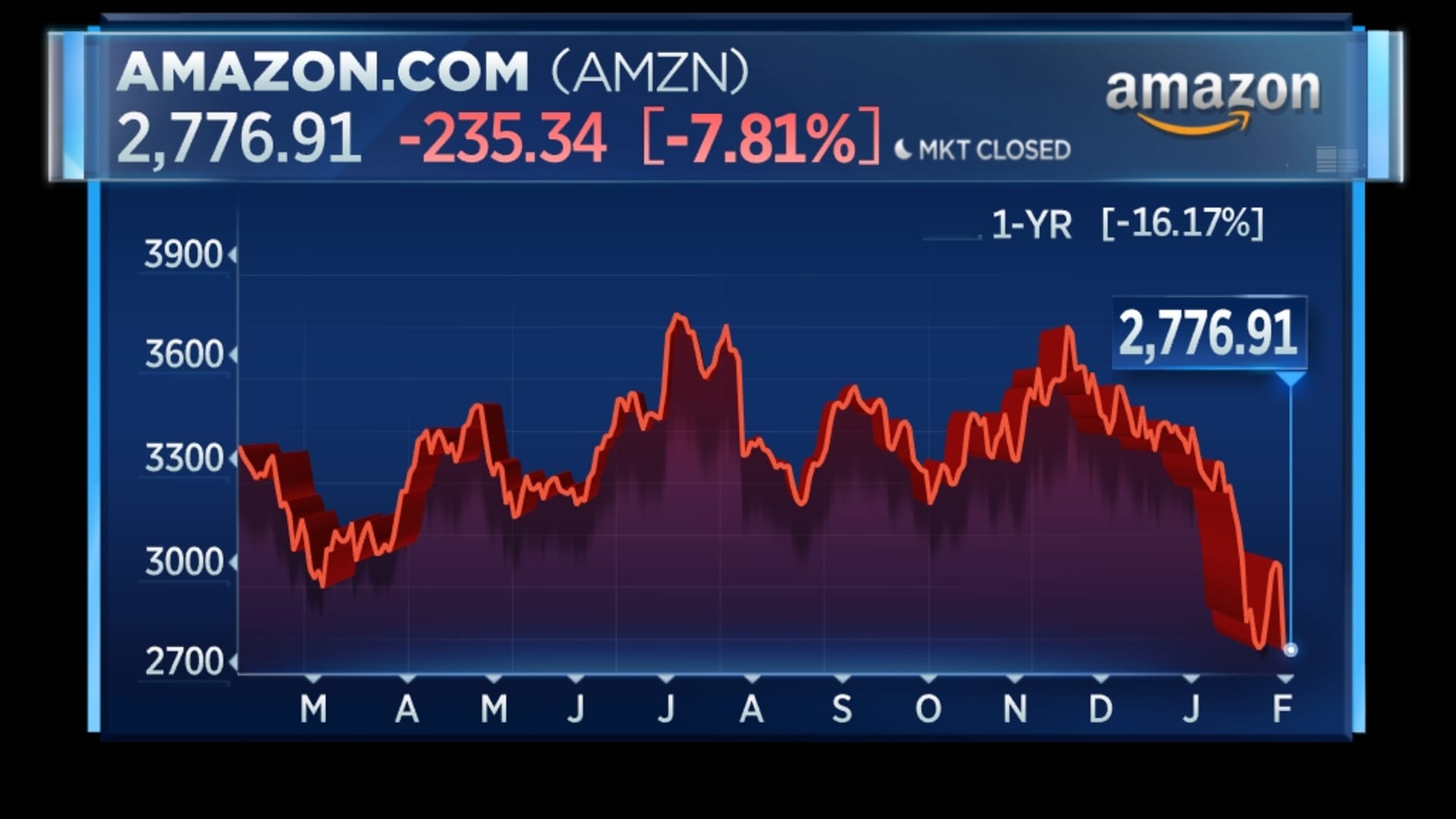
- Amazon just reported its slowest revenue growth in more than four years, while its retail business in the U.S. and internationally lost money.
- The company's cloud and advertising businesses served as two clear bright spots for investors.
- Amazon also reassured Wall Street that it was getting pandemic costs under control.
Amazon just reported its slowest revenue growth in over four years and missed estimates. But investors found plenty of relief elsewhere.
That's because cloud computing and advertising, the areas where Amazon generates the heftiest profits, showed rapid expansion.
Amazon Web Services, which provides remote computing, storage and database services, reported a revenue jump of almost 40% from a year ago to $17.8 billion, beating the $17.37 billion expected by analysts. AWS' operating income of $5.29 billion accounted for more than 100% of Amazon's total operating profit for the quarter.
The Hurricane season is on. Our meteorologists are ready. Sign up for the NBC 6 Weather newsletter to get the latest forecast in your inbox.
Amazon also surprised investors by breaking out advertising as a separate business for the first time. Ad revenue jumped 32% to $9.7 billion, almost equaling Google's ad growth rate for the quarter. Until now, Amazon has grouped ads into its "other" business segment, leaving analysts and investors guessing about its size.
"The story for the fourth quarter is different from the second and third quarter to the extent that the high-margin businesses — cloud computing and advertising — were able to offset a slowdown in e-commerce," said Tom Forte, an analyst at D.A. Davidson, in an interview on Thursday with CNBC's "Closing Bell." Forte recommends buying Amazon shares.
Money Report
The stock closed up 13% on Friday, marking its biggest one-day gain since 2015.
Fourth-quarter sales rose 9.4% from a year earlier to $137.4 billion, falling just short of the $137.6 billion in revenue projected by analysts. It marked Amazon's first period of single-digit growth since 2001, and represented a major slowdown from the fourth quarter of 2020, when sales jumped 43.6%.
Meanwhile, revenue from Amazon's online stores dropped 1% to $66.1 billion. Its U.S. segment recorded $206 million in operating losses, while the international side lost $1.63 billion. The retail business has been battling through supply chain problems, a labor market crunch that's persisted because of the Covid-19 omicron variant and inflationary pressures on consumers.
Amazon responded by spending big on wage hikes and by increasing incentives to lure workers. It also used its balance sheet to secure space on ships at a time when the cost of procuring and moving cargo containers skyrocketed, and to pay for coronavirus-related safety measures to protect front-line workers.
Leading up to the earnings report, investors had turned bearish. Amazon was the worst-performing Big Tech stock last year, and was down 17% in 2022 as of Thursday's close.

In addition to providing uplifting cloud and ad revenue numbers, the company indicated that brighter days are also ahead for retail.
Amazon guided for first-quarter operating income of between $3 billion and $6 billion, suggesting it expects to get pandemic costs under control soon. And as case numbers hopefully keep dropping, Amazon appears poised to take advantage of the massive investments it's made in expanding its warehouses and building out its delivery network for speedier service.
CFO Brian Olsavsky said on the earnings call after the report that Amazon is now in a better position to handle labor and supply chain challenges.
"We do see the sun coming out and getting better here over the next number of quarters," Olsavsky said.
Correction: A prior version of this story had the incorrect timeframe for the last time Amazon recorded single-digit sales growth.






